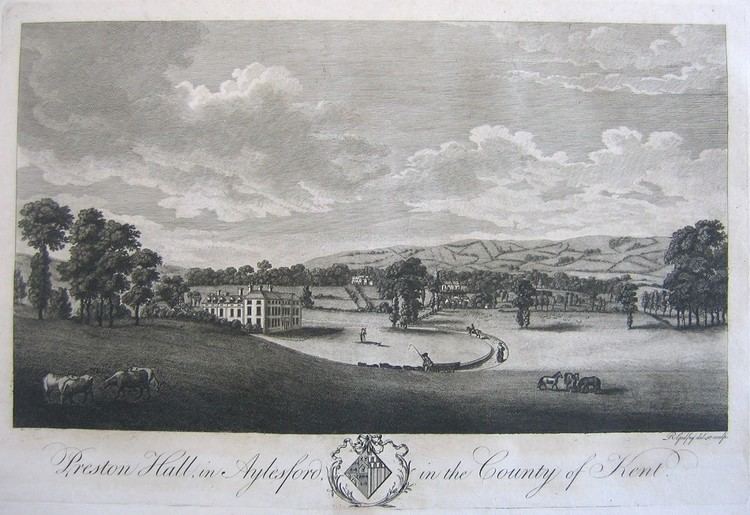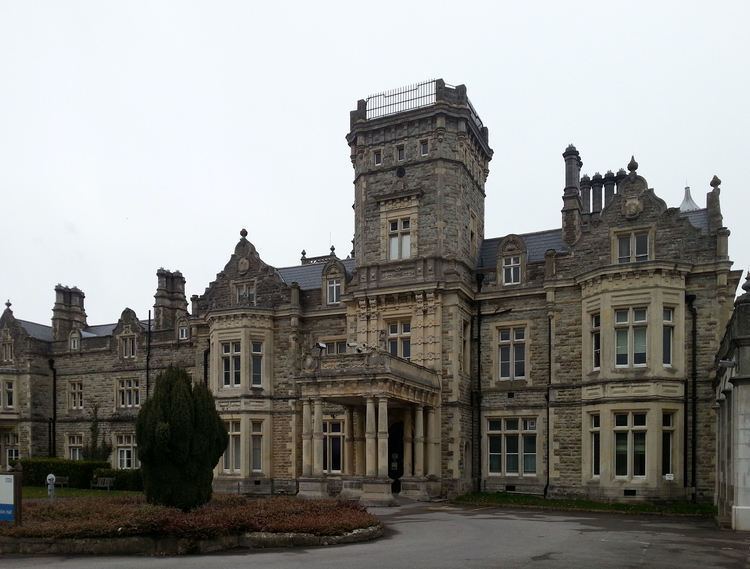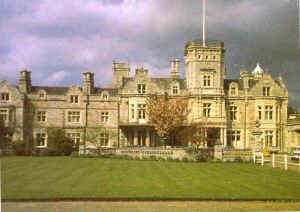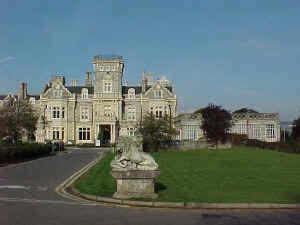 | ||
The history of preston hall mini documentary preston hall aylesford
Preston Hall is a manorial home in Aylesford, Kent, England, dating back at least to 1102. Owned by the Culpepper family for over 400 years and latterly used as a hospital, part of the estate became the Royal British Legion Village in the 1920s. Some of the remaining land is now given over to housing and the Heart of Kent Hospice.
Contents
- The history of preston hall mini documentary preston hall aylesford
- Preston hall aylesford development overview
- The Culpepper family
- The Milner Family
- Edward Betts
- The Brassey family
- Robert Horner
- The Sauber family
- Red Cross
- Leeds Fireclay Company Limited
- Industrial Settlements Incorporated and the Preston Hall Colony
- British Legion and Royal British Legion
- Housing 21
- Weston Homes Plc
- Cricket ground
- References
Preston hall aylesford development overview
The Culpepper family

From c1300 to 1734 the estate was owned by the Culpepper family, eventually passing to Alicia Culpepper in 1723. Alicia married four times but outlasted all of her husbands and died in 1734. Her only son, Sir Thomas Taylor (by her second husband, also Sir Thomas Taylor) had died in 1720 at age twenty seven. Her last husband, Dr John Milner, was much younger than her and having no living children herself, she had passed the Hall to him and his successors, only keeping a life interest. Because her last husband died before her, when she died the Hall passed to her husband’s brother, Dr Charles Milner.
The Milner Family

Dr Charles Milner lived at Preston Hall until his death in 1771, when the Hall and the estate passed to his great nephew Charles Cottom who, on succeeding to the estate, changed his surname to Milner and was living at Preston Hall in 1815 (Another source states that on Dr Charles Milner's death the estate passed to his nephew, the Rev. Joseph Butler, who on succeeding to the estate changed his name to Milner.)
Edward Betts

In 1848 the Hall was bought by Edward Ladd Betts a very successful railway contractor, who demolished the old house and had it rebuilt in the present Jacobean style. Betts commissioned John Thomas as his architect. Betts’ partner, Samuel Morton Peto, had commissioned Thomas to supervise the rebuilding of the sumptuous Somerleyton Hall in Suffolk, also in the Jacobean style. The new Preston Hall has not been universally appreciated: it is reported that the new house, “… could hardly be drearier. The materials … seem to have been coloured artificially a greyish-yellow, are repellent in the extreme.”

As part of his improvement of the estate, Betts laid out a series of horse rides. The Green Drive ran in line with the front drive of the Hall, from the front gates directly to Broke Wood a mile or so away. From Broke Wood there was a view down The Green Drive to the front of the Hall. Also, another ride ran from Broke Wood to Holt Wood.

Betts undertook a lot of railway construction in the south-east of England, including the part of the Medway Valley Line that runs through the Preston Hall estate and built during his ownership of the Hall.
Betts ran into financial difficulties in the banking crisis of 1866, became insolvent the following year and was forced to sell the Hall.
Betts was highly regarded by the local inhabitants. In an address presented to Betts and his family at the time of their departure from Preston Hall, the villagers of Aylesford observed:
"We should not forgive ourselves if we allowed you to depart from us without our expressing to you our deepfelt gratitude for the many benefits you have conferred upon this village.
"If we take a retrospective view of what Aylesford was 20 years back, and contrast it then with its present state and condition, what a manifest improvement is everywhere to be seen—and this, Sir, has been brought about chiefly through your instrumentality. Our Village Church, the Wesleyan Chapel, the Infant School, the Library and Reading Rooms, and the bringing of pure spring water to our doors, are all evidences that you were ever ready by your generous aid, to promote the happiness and comfort of all the inhabitants.
"And not only in these more public acts of generosity have you been distinguished during your residence among us, but also in the exercise of those kind and benevolent feelings which have prompted you at all times to relieve the widow, comfort the sick, and aid the distressed; in which good work of charity Mrs Betts and the members of your family have also been most willingly engaged."
Despite moving from the area, when he died in 1872, Betts' body was interred in the family vault in the churchyard of St Peter and St Paul's Parish Church, Aylesford.
The Brassey family
With Betts's insolvency in 1867, the Hall was bought by Thomas Brassey, the railway contractor, on behalf of his son, Henry Brassey. Henry did not work in railways himself, but his father was a friend of Betts and they had worked closely together, so Henry clearly knew Betts and Preston Hall. Henry moved to Preston Hall on the death of his father in 1870.
Henry became a great benefactor of Aylesford, including financing major repairs to the church and provided the village with a school. Between 1868 and 1885 Henry was MP for Sandwich, Kent, and later served as both Deputy Lieutenant and High Sheriff of Kent. He died in 1891 and his wife, Anna, in 1898.
On the death of Anna, Preston Hall passed to Henry and Anna's son, Henry Leonard Campbell Brassey (1870–1958). Henry Leonard Campbell Brassey had married Lady Violet Mary Gordon-Lennox (1874–1946), the daughter of Charles Henry Gordon-Lennox, 7th Duke of Richmond, in 1894. Lady Violet did not care for Preston Hall, expressing the opinion "... it was only fit for commoners as it had no historical legacy." They moved to Apethorpe Hall, Northamptonshire, in 1904 and sold off major parts of the Preston Hall estate.
Robert Horner
The Hall was sold to Robert Horner of Spitalfields in 1906 but remained unoccupied.
The Sauber family
In 1907 Robert Sauber took up residence.
Red Cross
With the coming of the Great War in 1914, Robert Sauber’s widow, Madame Sauber, let the Hall and estate to the Red Cross for use as a hospital and convalescent home for wounded servicemen. It was particularly used for gassed soldiers and built a reputation for the treatment of those suffering with tuberculosis (which was endemic in the trenches during the War).
Leeds Fireclay Company Limited
With the end of hostilities, the estate was briefly owned by the Leeds Fireclay Company Limited before being sold to Industrial Settlements Incorporated in 1919.
Industrial Settlements Incorporated and the Preston Hall Colony
At the end of the Great War, 55,000 people were discharged from the military with Tuberculosis and of those, it was estimated that 18,000 died as a result of returning to inner-city housing.
A group of high-ranking army officers recognised the need for Preston Hall to continue as a centre for the treatment of tuberculosis and formed Industrial Settlements Incorporated to acquire the Preston Hall estate to establish a sanatorium, training colony and village settlement.
Industrial Settlements Incorporated purchased the estate from Leeds Fireclay Company in 1919 for £30,000. The estate became known as the Preston Hall Colony.
In 1923, the Emergency Voluntary Aid Committee of the Empress Club, a fashionable ladies social club in London, paid for a shop to be built opposite the main gate of Preston Hall and four cottages in Hermitage Lane, on sites that backed onto the Green Drive that had been laid out by William Betts.
At a time when the only treatment for TB was fresh air and rest, the cottages had verandas so that TB patient’s beds could be pushed outside. The cottages were large enough that patient’s families could live with them. Eventually about 30 cottages were built.
British Legion and Royal British Legion
By 1925 the number of patients at the Colony had dwindled greatly and the need was recognised to pass the running of the whole operation over to a larger organisation. By this time the British Legion had been established for 4 years and it agreed to take over the Colony from the 1 April 1925.
At the start of 1926 there were 200 men, women and children resident in the Colony, by the end of 1927 that had doubled and by the end of 1928 the population had grown to 500.
With the threat of the Second World War, Preston Hall Hospital was put at the disposal of the Government in July 1939
With the coming of the National Health Service, Preston Hall itself was passed to the local health board.
In 1971, as part of the British Legion’s 50th Anniversary celebration, the Queen granted the Legion the prefix “Royal” and so the Village also took the prefix “Royal” - Royal British Legion Village.
To take advantage of Government funding and other benefits, much of the housing owned by the Royal British Legion on the estate was incorporated into the Royal British Legion Housing Association.
Between 1983 and 2012 the Hall was used as the headquarters of the Maidstone Health Authority. In March 2014 the Hall was sold by the Department of Health to Weston Homes for a 'nominal fee', to be converted into 36 residential apartments.
Housing 21
Government housing policy at the time required that housing associations distance themselves from other bodies. In 1992 the Royal British Legion Housing Association changed its name to Housing 21 and the following year the Royal British Legion formally disassociated itself from Housing 21.
Weston Homes Plc
The site was finally acquired by Weston Homes Plc in 2014 who are now proud to be part of history and return Preston Hall back to the original residential use of the mansion, retaining many of the historical features to offer stunning spacious homes with imposing architecture that combine history with all the facilities required for modern living.
Cricket ground
Within the grounds of the hall was a cricket ground. In 1846 and 1847 Kent played Surrey in the ground's only first-class matches.
The last recorded match was between H Brassey's XI and I Zingari in July 1879. Despite a failed attempt by Ditton Cricket Club (a neighbouring village) in the early part of this century, to resurrect the game on the old Aylesford School playing fields that once belonged to the estate, there is no longer cricket played in the village.
